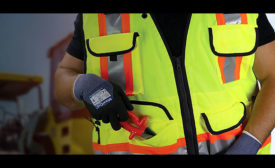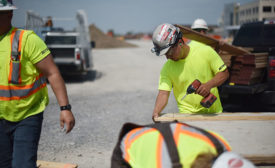Home » Keywords: » highway work zone safety
Items Tagged with 'highway work zone safety'
ARTICLES
Hi-Visibility garments continue to evolve
We’ve seen the popularity of lighter, more flexible and breathable segmented trim, and more enhanced visibility by integrating LED luminescence directly on the trim.
March 14, 2019
Wear high-visibility safety apparel
You want to stand out to be seen by drivers when working alongside traffic
March 5, 2019
Safety Stand-Down puts the brakes on injuries at Georgia road sites
One-hour work stoppage helps laborers avoid being struck by distracted drivers
March 25, 2015
ASSE wants tougher standard for impaired driving
Legal impairment standard would go from blood alcohol level of .08% to .05%
September 18, 2014
NJ company put highway workers at risk
OSHA issues citations for lack of traffic signs, oversight
September 16, 2013
Become a Leader in Safety Culture
Build your knowledge with ISHN, covering key safety, health and industrial hygiene news, products, and trends.
JOIN TODAYCopyright ©2024. All Rights Reserved BNP Media.
Design, CMS, Hosting & Web Development :: ePublishing






